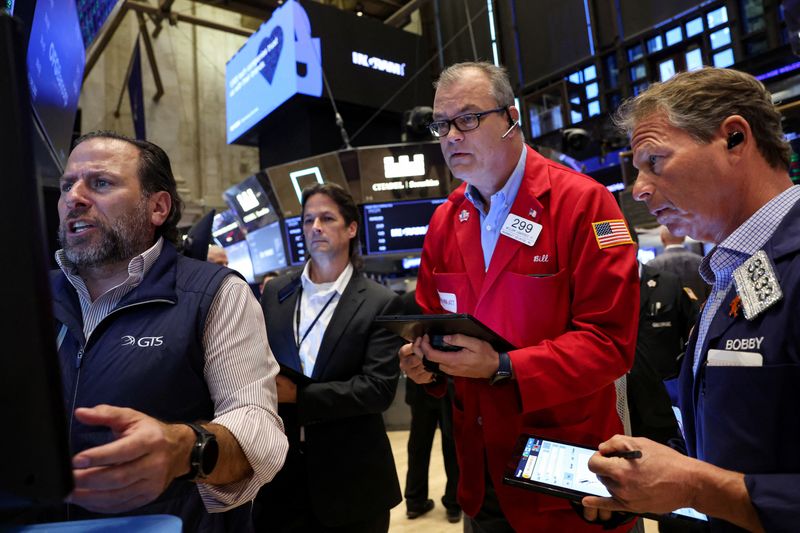By Lewis Krauskopf
NEW YORK (Reuters) – A double dose of potentially market-moving events arrives in the coming week as Americans vote on their next president and the Federal Reserve offers more insight on the path of interest rates at its monetary policy meeting.
The Nov. 5 vote culminates an election cycle that has captivated the country and sparked swings in corners of financial markets. Among these has been the waxing and waning of the so-called Trump trade, a bevy of asset price moves reflecting sentiment that Republican Donald Trump is gaining momentum in his race against Democrat Kamala Harris for the U.S. presidency.
Those trades have included a rise in the U.S. dollar and a sell-off in Treasuries possibly fueled by strong economic data and a bitcoin surge spurred by hopes that Trump would deregulate the crypto industry.
Still, polls remain deadlocked and bets leaning toward Trump were narrowing at the end of the week. Some investors expect volatility to accompany next week’s vote, no matter the result.
“In either scenario, it seems like there’s some near-term risk,” said Walter Todd, chief investment officer at Greenwood Capital.
Todd said a win by the Republican could be a “sell the news” event that sparks profit-taking in Trump trades. A win by Harris could spark a more serious unwind, he said.
Control of Congress will also be determined with Tuesday’s vote, adding another wrinkle for investors as they weigh how various political outcomes could impact assets over the longer term, with the two candidates offering starkly different paths for the U.S. economy.
For example, the expectation that Trump would seek to lower regulations stands to benefit banks, while higher tariffs could benefit domestically focused small-cap companies while ramping up the potential for volatility in broader markets.
Expectations that Harris would be more supportive of clean energy initiatives means solar and other renewable energy stocks could rise in the event she prevails, analysts said.
Investors are also wary of volatility from an election result that is not immediately clear due to the closeness of the race or is contested by one of the parties. In 2020, Trump tried to overturn the results of his loss to President Joe Biden, falsely claiming it was the result of voter fraud in multiple states.
“The market did fine under Trump. It can do fine under Harris,” said Robert Pavlik, senior portfolio manager at Dakota Wealth. “We just need clarity.”
FED AHEAD
Thursday’s Fed decision on monetary policy looms as another risk for the S&P 500‘s rally of some 20% this year, though mixed earnings from several tech giants this week led the index to end October in the red, following five straight months of gains.
Fed funds futures trading shows the market expects the U.S. central bank to cut its benchmark policy rate by a modest 25 basis points, LSEG data showed, after easing rates in September for the first time in four years. For many investors, the focus will be on guidance from Fed Chair Jerome Powell, including whether the central bank might consider pausing its rate-cutting cycle at future meetings in light of strong economic data. Citigroup’s economic surprise index, which measures how economic data performs versus expectations, is at its highest level since April. Data this week showed the U.S. economy grew at a solid 2.8% pace in the third quarter. Friday’s monthly employment report, the last key piece of data before the Fed meeting, ran counter to that trend as it showed job growth almost stalled in October. The data, however, was clouded by aerospace industry strikes and hurricanes that impacted the response rate for the payrolls survey. “This week’s data … suggest the reasoning for a cut is still valid,” JPMorgan economist Michael Feroli said in a note. “Even if the election is decided by Thursday, we think there are enough uncertainties in the outlook to warrant a cautious approach to forward guidance” from the Fed.

